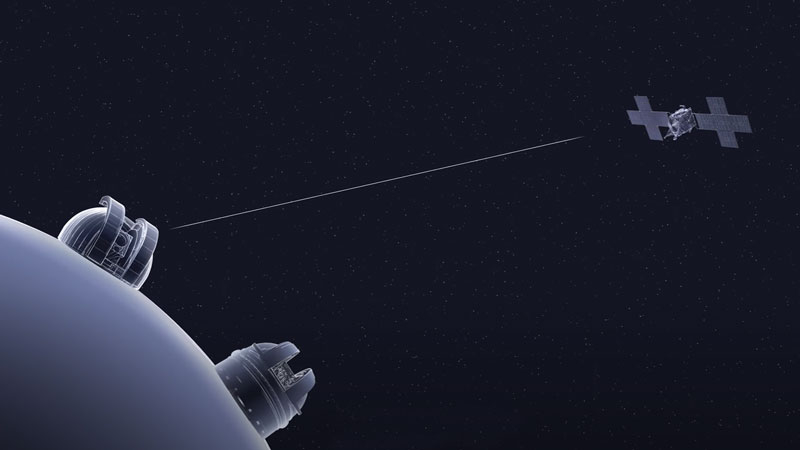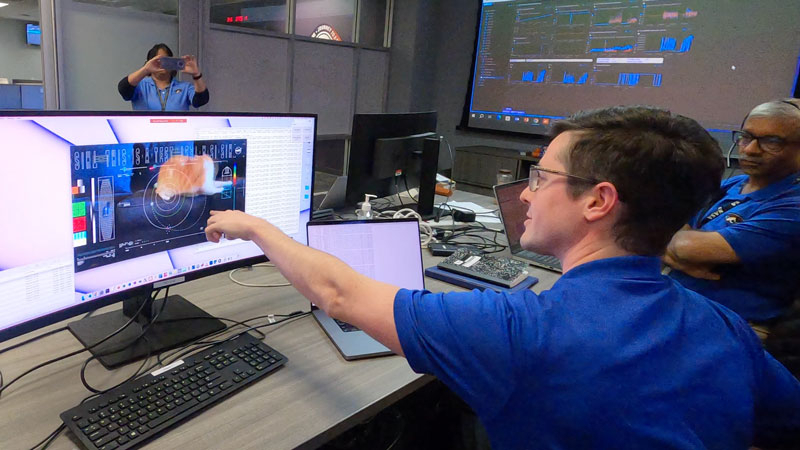NASA has proven that a stable communication speed with Mars via a laser beam can reach 6.25 Mbit/s, even when it diverges from the Earth at its maximum distance. This was shown by experience with NASA’s Psyche probe, with which a laser communication session took place at a distance of 490 million km. This was the first laser communication in deep space, confirming the possibility of going from radio to optics at such distances and increasing transmission speeds by 100 times.

Image source: NASA
«A key goal of the system was to prove that the reduction in data rate is proportional to the inverse square of the distance, said Abi Biswas, project technologist at JPL. “We achieved this goal and transmitted a huge amount of test data to and from the Psyche spacecraft using a laser.” The first stage of the demonstration transferred almost 1.4 TB of data.
All information for testing laser communications in deep space was loaded into the system’s memory in advance. No scientific instruments of the probe are connected to the laser communication module. The Psyche mission and laser communication are different experiments on a common platform. Today we can say that the experiment was a complete success. Equipment from Earth was able to locate the probe’s optical receiver at an unimaginable distance, just as Psyche’s transmitter was able to target the receiver on Earth. With radio it is simpler in this regard – even directed radiation has a large dispersion cone. Optics is a completely different matter. The accuracy of the hit must be sniper-like.

Even in space you can’t do without cat videos
The uplink from Earth was terminated by a 7 kW laser at JPL’s Table Mountain Laboratory near Wrightwood, California. The downlink signal was received by the 5-m optical telescope at Caltech’s Palomar Observatory in San Diego County, California. When the probe moved 53 million km from Earth (the distance of closest approach of Earth and Mars), the laser communication speed reached 267 Mbps, which corresponds to the speed of the Internet via broadband on Earth. The connection was not interrupted and remained stable even after “Mars diverged from the Earth to its furthest distance” – when the probe flew 490 million km from the Earth, which happened by the end of June of this year. The peak speed then reached 8.3 Mbit/s, and the sustained speed was 6.25 Mbit/s.
Laser communications operated in the near-infrared range. This is approximately 100 times faster than radio transmission. This is extremely important for receiving scientific data from space from future scientific stations and observatories. The equipment sent into space is becoming more and more complex and demanding of communication channels. An experiment with laser equipment aboard Psyche demonstrated the technological feasibility of the new approach. At this point, NASA completed the first stage of the experiment. The laser equipment on the probe will be turned on again and conduct a communication session on November 4 this year to ensure the mission team is confident in its ability to turn on again and remain operational for at least one year.